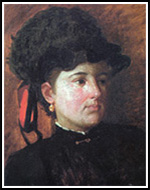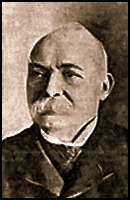

“I had finished my tenth year in the midst of the highest society that America could have . . . and I began my last year extremely satisfied, except my health.”

Amid Juglaris’s personal successes and sorrows, there continued to be a mounting tide of nationalism and anti-immigration sentiment across America. As part of a call for cultural independence from Europe, there was much talk of forging a distinctive American art, more “democratic” and historical in subject matter and less beholden to traditional European themes and mythological motifs. This made America a less congenial place for an immigrant artist like Juglaris who remained keenly interested in the prospect of public mural commissions. Native-born artists expressed doubt that foreign-born muralists could appropriately convey the American spirit and experience they deemed important for public art.

Although his memoir never directly addresses the matter, Juglaris must have been deeply frustrated at being overlooked when muralists were solicited for the new Boston Public Library, a classically-designed building rising in Copley Square just a short distance from where he lived and worked. The Boston Library trustees did recruit the French muralist Pierre Puvis de Chavannes for a mural above the grand staircase. But he was internationally renowned and preeminent among muralists. For other mural commissions, the library trustees focused on American artists. James McNeil Whistler was solicited but declined the honor. Ultimately, two other expatriate American artists, John Singer Sargent and Edwin Abbey, plus the British-born Boston artist John Elliot, were tapped to help make the new building the “veritable Assisi of American Art.” Neither Sargent nor Abbey had any previous mural experience at all. Elliot did have at least one mural to his credit. Yet his most important credential was as son-in-law of Boston notable Julia Ward Howe, the author of the lyrics to “The Battle Hymn of the Republic.” Howe’s generous friends were willing to pay Elliott’s commission as a gift to the library.
A more certain embarrassment for Juglaris was the public snub that he received from an exhibition jury at the Boston Art Club while still teaching at its affiliated school. The jury declined to include for mounting and display his portrait of a Boston matron that he had submitted for review. Boston newspapers were full of comment. One “Art Notes” columnist remarked:

“[The public] will be surprised to discover that in the exhibition of our representative art club a large proportion of our representative artists are unrepresented; and it will probably reflect that as good as some of the art is on the walls of the gallery, a larger showing of good art could be made here if, for some inscrutable reason, the absent artists did not abstain from sending in their works. Perhaps these artists do not care to run the gauntlet of the Art Club jury, that is, providing there is any necessity for their doing so. It would be curious to see an exhibition of the two hundred and odd pictures refused. We have seen one of them, a portrait by Juglaris, which was subjected to that humiliation. It is now to be viewed at the gallery of Messrs. Williams and Everett. In point of color and drawing it is [a] masterly portrait in its way. Few, if any artists in New York or Boston could produce a better portrait than this is on the whole. The figure has admirable simplicity and dignity, the tone of the work is charming, and the true artist is shown throughout. That the face is not as finished it might be would perhaps have weight with a more particular jury than some of the pictures admitted to the Art Club exhibition incontestably prove that organization’s jury to have been. That it should have accepted so much that was worthless, and refused this portrait, with whatever shortcomings may be discovered in it, is an enigma we try in vain to solve.”
Given Juglaris’s long-time role with the Boston Art Club as teacher-in-residence and an established artist, the exclusion of his portrait from the exhibition was particularly remarkable, even astonishing. If the exhibition’s jury process was not name-blind, it raises the possibility that more than strictly aesthetic considerations were also involved. At the same time, Juglaris’s painterly style could have been very recognizable without his name being identified at all. It may have been no coincidence that the incident happened at a time when American-born artists generally were becoming more assertive and competitive and a nationalist spirit was clearly on the rise. Alternatively, it may have been hard for Juglaris to feel and believe otherwise.

Of course, adding further stress to his life in roughly the same time period, Juglaris was also dealing with both the polarizing Abbott Graves affair and the very public battle involving the Italian Consul General in New York who stood accused of corruption. Compounding his usual fatigue from sheer overwork as a dedicated teacher and notable art figure, all these developments took their toll on Juglaris. Indeed, in October 1889, little more than a month after accepting a truce with Italian Consul General, Juglaris caught an illness he couldn’t shake. By January 1890 he was completely bedridden for four weeks. The Rhode Island School of Design paid him all the same but the Boston Art Club School docked his pay for missed teaching days. A disappointed Juglaris remarks in his memoir: “It was logical and I said nothing, but I found it hard, after eight years of continual and irreproachable service!” Although Juglaris had already enjoyed an extraordinary decade-long American career, the bloom was definitely fading from the rose. What he had to offer remained considerable. Yet his future in Boston and the United States was perhaps going to require more stamina and fortitude on his part than he could summon.